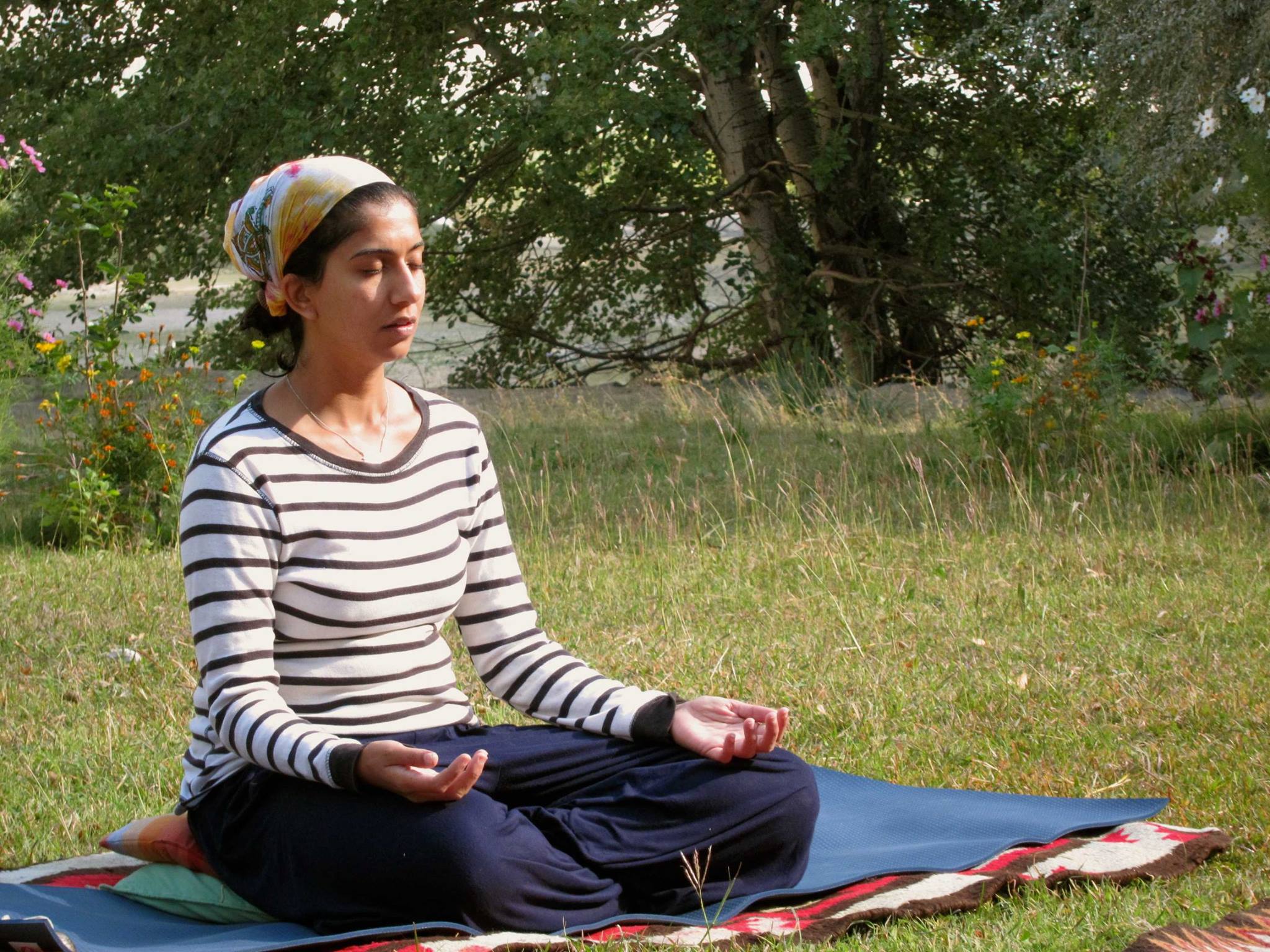The Benefits of Prenatal Yoga
By: Aisha Chapra Sander
I have been a yoga teacher for several years in Pakistan. I began traveling to the northern areas of the country in 2011, and in the past year have organized several yoga retreats in the stunning mountains of Chitral and Skardu. I enjoy teaching yoga to people of all ages, including mothers, and introducing them to regions they have never experienced. I practice a loving kind style of yoga, which emphasizes body awareness through the core, breath work, and simple mindful movements. It is a continually evolving practice which gives me nourishment and equanimity for the body, mind and soul.
It is important to realize that though modern yoga is largely focused on movement and posture, the purpose of yoga is rooted in a holistic concept of health that includes mental, emotional, physical and spiritual health. Various yogic practices help cultivate a still mind, increase prana (life force) in our bodies, help balance our emotions and thoughts, and make us aware of our essential nature as spiritual beings.
Prenatal yoga is a very unique subset of yoga practice that has been developed with great care by many modern yoga practitioners around the world. The benefits of prenatal yoga go beyond just preparing the body for the physical aspect of labor. Yoga exercises target the mind by reducing anxiety and stress hormones, improve healthy circulation, organ function, and help to balance reproductive hormones (estrogen, testosterone, and progesterone) during the entire pregnancy.
A woman’s body is always changing as she moves through her life. One of the most dramatic changes that a woman can experience is pregnancy. Yoga is a science that incorporates breath and bodywork to balance the mind, emotions, and the nervous system. The essential foundation we want to build in the first phase of prenatal yoga, which, depending on the person can begin with the pregnancy or after the first trimester (please consult with your physician before beginning any exercise routine) is strong legs, open hips, and a calm even breath.
In the third trimester the yoga practice will dramatically change since the body is now carrying more weight at the abdomen. The focus turns to relaxation, comfort, sleep support, meditation and lots of loving touch and massage. This is a time to move towards what is called “restorative yoga”, which has all the same benefits as a more active yoga practice, but even further supports the upcoming transition from pregnancy to motherhood. In restorative yoga there is a focus on using various props, like cushions, blankets, blocks, straps, eye pillows to make each person extremely comfortable and relaxed.
In the practice of yoga we are constantly returning to the present moment by connecting with our breath, and observing ourselves in a neutral and detached way. This seed can grow into strong roots of self-compassion, awareness, and connection with our deeper selves. In the journey to motherhood yogas benefits have a wide reach in the most challenging initial months where your body may feel extremely fatigued, your hormones imbalanced, and the newness of being responsible for a complete dependent. It may not always be possible to continue yoga in the same manner once the baby arrives, but the awareness of your breath will help calm your nervous system even in the most stressful and uncertain circumstances.
Women can choose to attend private classes or group classes, as both have their benefits. I generally prefer to do one on one with my clients who are in their final trimester and encourage women up to their third trimester to explore small group classes. Group classes are a great place for expecting moms to meet one another and build a healthy, supportive community through their yoga practice. In the following article I have outlined some prenatal yoga exercises that women can do from the comfort of their home to help with their pregnancy.

Leave a Reply